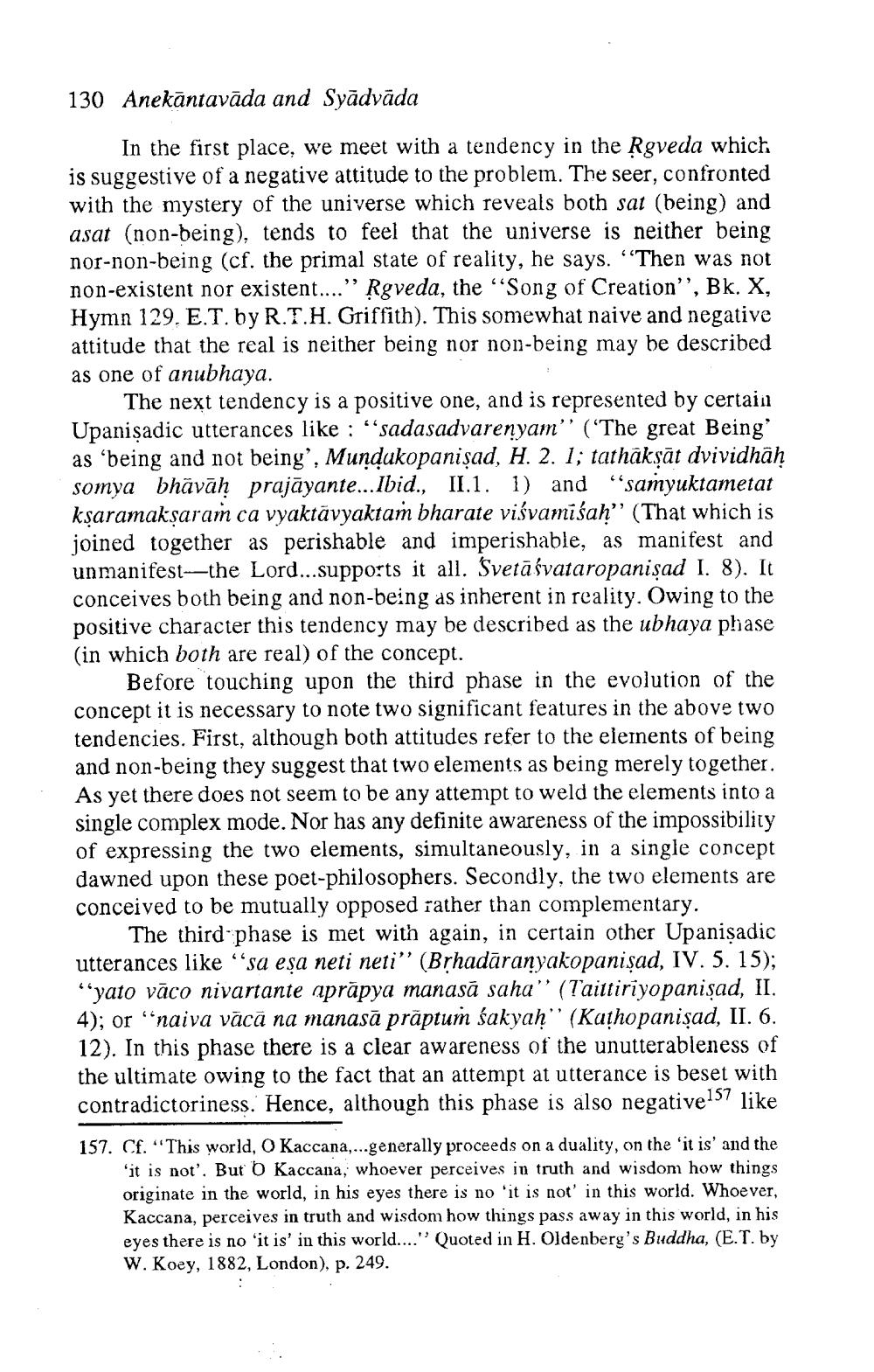________________
130 Anekāntavāda and Syādvāda
In the first place, we meet with a tendency in the Rgveda which is suggestive of a negative attitude to the problem. The seer, confronted with the mystery of the universe which reveals both sat (being) and asat (non-being), tends to feel that the universe is neither being nor-non-being (cf. the primal state of reality, he says. “Then was not non-existent nor existent....” Rgveda, the “Song of Creation”, Bk. X, Hymn 129. E.T. by R.T.H. Griffith). This somewhat naive and negative attitude that the real is neither being nor non-being may be described as one of anubhaya.
The next tendency is a positive one, and is represented by certain Upanisadic utterances like : "sadasadvarenyam” (“The great Being as being and not being', Mundukopanişad, H. 2. 1; tathākṣāt dvividhah somya bhävāh prajāyante... Ibid., II.1. 1) and “samyuktametat kşaramakşaram ca vyaktävyaktam bharate viśvamiśah" (That which is joined together as perishable and imperishable, as manifest and unmanifest--the Lord...supports it all. Svetāśvataropanişad I. 8). It conceives both being and non-being as inherent in reality. Owing to the positive character this tendency may be described as the ubhaya phase (in which both are real) of the concept
Before touching upon the third phase in the evolution of the concept it is necessary to note two significant features in the above two tendencies. First, although both attitudes refer to the elements of being and non-being they suggest that two elements as being merely together. As yet there does not seem to be any attempt to weld the elements into a single complex mode. Nor has any definite awareness of the impossibility of expressing the two elements, simultaneously, in a single concept dawned upon these poet-philosophers. Secondly, the two elements are conceived to be mutually opposed rather than complementary.
The third phase is met with again, in certain other Upanisadic utterances like "sa esa neti neti” (Brhadāranyakopanişad, IV. 5. 15); “yato vāco nivartante aprāpya manasā saha" (Taittiriyopanişad, II. 4); or "naiva vācā na manasā prāptum śakyah'' (Kathopanişad, II. 6. 12). In this phase there is a clear awareness of the unutterableness of the ultimate owing to the fact that an attempt at utterance is beset with contradictoriness. Hence, although this phase is also negative157 like
157. Cf. “This world, O Kaccana,...generally proceeds on a duality, on the 'it is' and the
it is not'. But Kaccana, whoever perceives in truth and wisdom how things originate in the world, in his eyes there is no 'it is not in this world. Whoever, Kaccana, perceives in truth and wisdom how things pass away in this world, in his eyes there is no 'it is in this world...." Quoted in H. Oldenberg's Buddha, (E.T. by W. Koey, 1882, London), p. 249.




